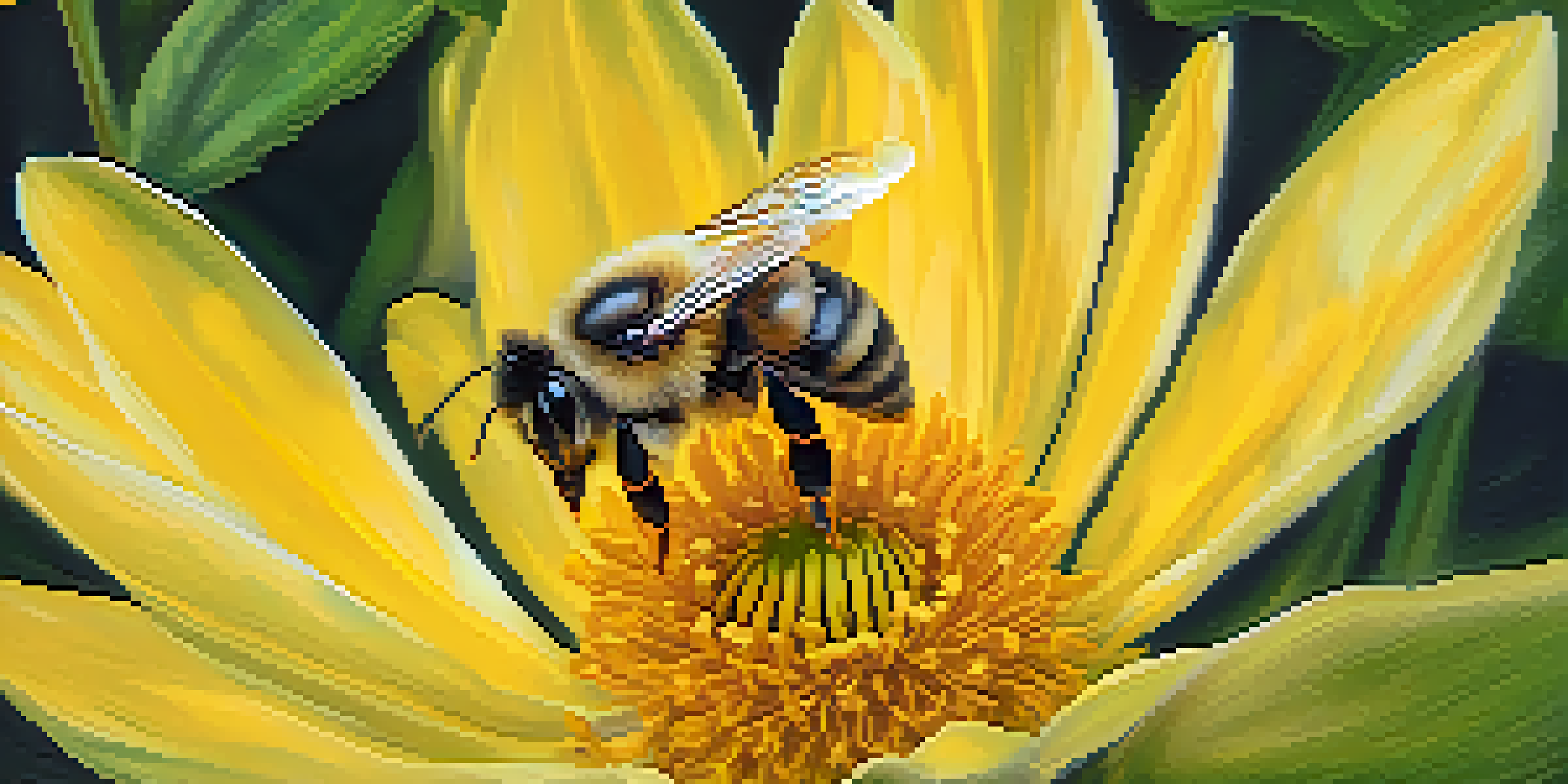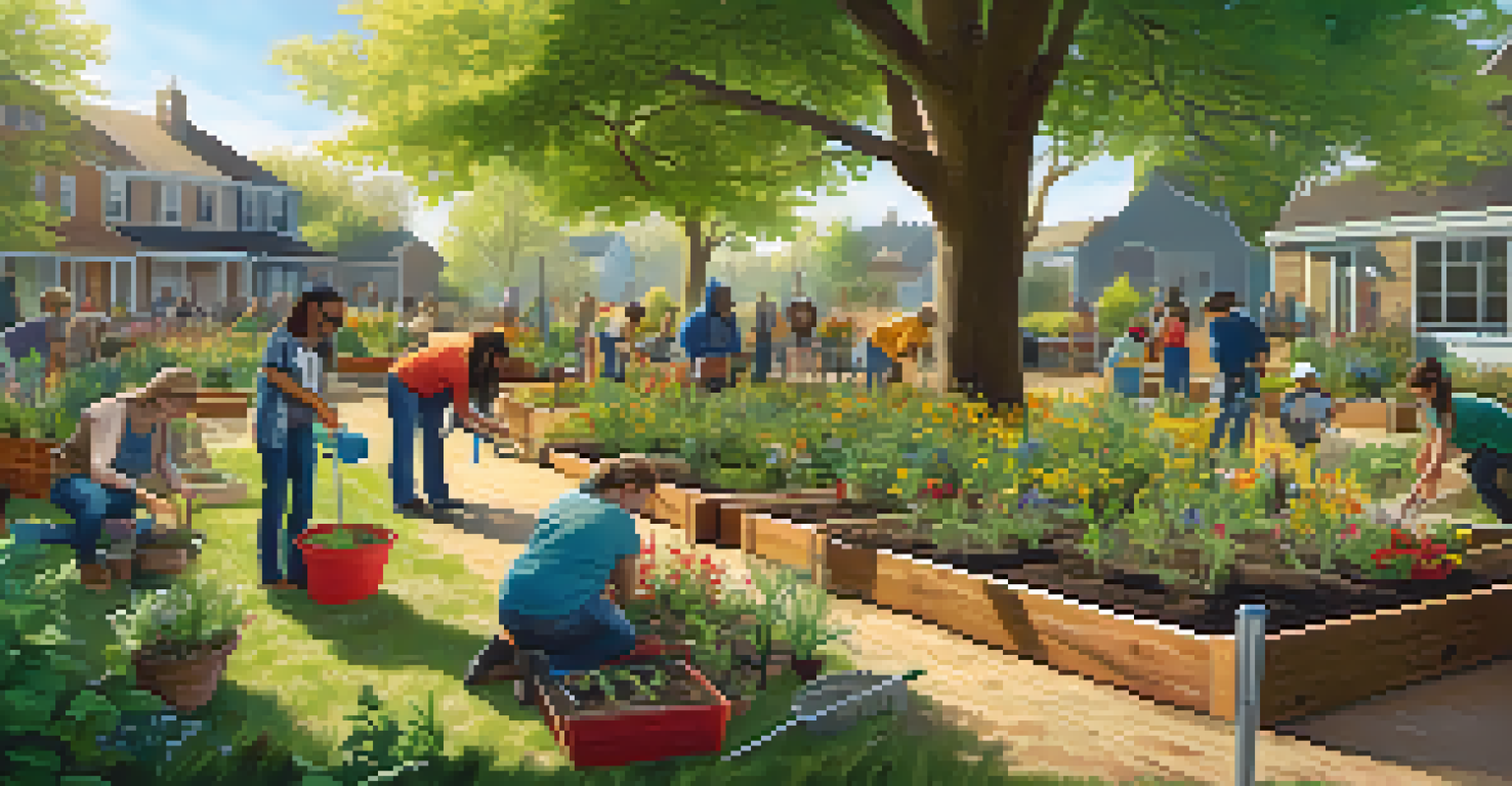How Plants Support Pollinator Health and Ecosystem Balance

Understanding the Role of Pollinators in Ecosystems
Pollinators, such as bees, butterflies, and hummingbirds, are crucial players in our ecosystems. They help in the reproduction of many plants by transferring pollen, enabling them to produce fruits and seeds. This not only supports plant diversity but also ensures that food sources are available for other wildlife, including humans.
If bees disappeared off the face of the Earth, mankind would only have four years left to live.
When pollinators thrive, the entire ecosystem benefits. Healthy pollinator populations lead to more robust plant communities, which in turn support a wider range of animals. This interconnectedness highlights the importance of maintaining healthy pollinator habitats.
Without pollinators, many of the foods we enjoy, such as fruits, vegetables, and nuts, would become scarce. This dependency shows just how critical these creatures are for food security and ecosystem stability.
How Plants Provide Food for Pollinators
Plants serve as the primary food source for many pollinators, offering nectar and pollen. Nectar is the sugary substance that attracts pollinators, while pollen is rich in protein, making it a vital food source for many species. This mutualistic relationship benefits both parties, as plants get their pollen spread, and pollinators receive nourishment.

Diverse plant species bloom at different times throughout the year, ensuring a continuous food supply for pollinators. For instance, early bloomers like crocuses provide essential food when pollinators emerge from hibernation, while late bloomers like asters offer resources as summer fades.
Pollinators are vital for ecosystems
Pollinators like bees and butterflies play a crucial role in plant reproduction, which supports biodiversity and food security.
Creating gardens with a variety of flowering plants can significantly enhance the health of local pollinator populations. By choosing native plants, you can attract specific pollinators that have evolved alongside them, promoting a balanced ecosystem.
The Importance of Native Plants for Pollinators
Native plants are specifically adapted to local climates and soil conditions, making them more resilient and easier to maintain. These plants have co-evolved with local pollinators, providing the best sources of food and habitat. When you plant native species, you create an environment that supports pollinator health.
The best time to plant a tree was twenty years ago. The second best time is now.
For example, milkweed is the host plant for monarch butterflies, providing a crucial habitat for their larvae. By planting milkweed, you not only support these beautiful butterflies but also contribute to their conservation.
Incorporating native plants into landscaping not only benefits pollinators but also helps to preserve local biodiversity. A diverse plant community creates habitats for various insects, birds, and small mammals, enriching the ecosystem as a whole.
The Role of Plants in Habitat Restoration
Habitat restoration is essential for promoting healthy ecosystems and supporting pollinator populations. By reintroducing native plant species to degraded areas, we can help restore the balance of local ecosystems. This process involves planting flowers, shrubs, and trees that provide food and shelter for pollinators.
For instance, restoring wetlands with native plants can improve water quality and create a thriving habitat for both aquatic and terrestrial species. Pollinators benefit from the diverse food sources, while the restored habitat provides resilience against climate change.
Native plants support pollinators
Planting native species provides essential food and habitat for local pollinators, enhancing ecosystem resilience.
Community efforts in habitat restoration can yield significant results. By working together to plant native species, we can create corridors of greenery that support pollinator movement and enhance ecosystem connectivity.
The Impact of Pesticides on Pollinator Health
The use of pesticides can have detrimental effects on pollinator health, leading to population declines. Many pesticides are designed to target pests but can inadvertently harm beneficial insects. This can disrupt the delicate balance that plants and pollinators have worked to establish.
For example, neonicotinoids, a class of pesticides, have been linked to bee mortality. When pollinators are exposed to these chemicals, their ability to forage and navigate is impaired, reducing their overall survival rates.
To protect pollinators, it’s essential to adopt integrated pest management strategies that minimize pesticide use. Encouraging organic farming practices and creating pesticide-free zones can significantly improve pollinator health and ecosystem balance.
Creating Pollinator-Friendly Spaces
Creating pollinator-friendly spaces in our gardens and communities can significantly impact local ecosystems. Simple actions, like planting a variety of flowering plants and avoiding chemical pesticides, can attract and support pollinators. Even small spaces, like balconies or window boxes, can be transformed into havens for these essential creatures.
In addition to planting flowers, providing water sources and shelter is crucial. Installing bee hotels, leaving patches of bare soil, and maintaining a diverse landscape can create ideal habitats for pollinators to thrive.
Pesticides harm pollinator health
The use of pesticides can negatively impact pollinator populations, highlighting the need for safer pest management practices.
Engaging with local communities to promote pollinator-friendly practices can foster a culture of sustainability. By sharing knowledge and resources, we can collectively make a difference in supporting pollinator health and preserving our ecosystems.
The Future of Pollinators and Plants
The future of pollinators is intrinsically linked to the health of our plant communities and ecosystems. As climate change and habitat loss continue to threaten pollinator populations, it's vital to take proactive steps to protect these essential species. By understanding and advocating for the importance of plants in supporting pollinators, we can contribute to a more sustainable future.
Innovative approaches, such as urban gardening and community-supported agriculture, can help bridge the gap between people and nature. Educating others about the importance of pollinators can inspire action and foster a deeper appreciation for the natural world.

Ultimately, nurturing plants and pollinators is a shared responsibility. By working together, we can ensure a thriving environment for future generations, where both plants and pollinators can flourish.